靴のクッションは履物業界の重要な要素となり、快適性、パフォーマンス、足全体の健康に大きな影響を与えています。消費者が快適性とサポートを重視するにつれて、高度な靴のクッションソリューションの需要は高まり続けています。この記事では、靴のクッションの将来を形作る現在の市場動向、主要プレーヤー、地域の好みについて詳しく説明します。
目次:
- 市場概況
– 素材とデザイン:靴のクッションのバックボーン
– 技術的特徴: 靴のクッションの未来
– メリットとパフォーマンス: 靴のクッション性が重要な理由
– カスタマイズとターゲットオーディエンス:多様なニーズへの対応
市場概観
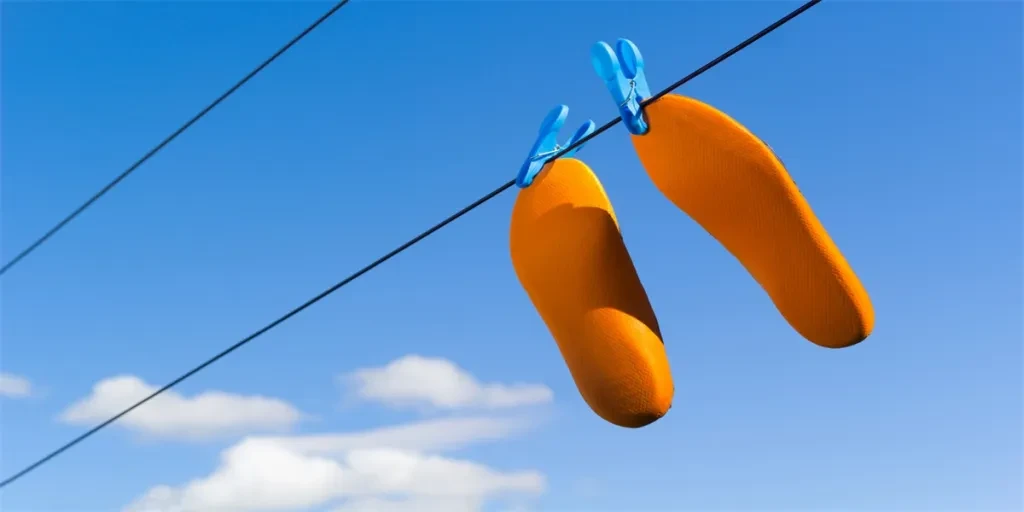
現在の需要と成長
靴のクッション材製品を含む世界の靴のインソール市場は、著しい成長を遂げています。Research and Markets のレポートによると、市場規模は 8.24 年までに 2030 億 4.7 万米ドルに達し、2024 年から 2030 年にかけて XNUMX% の年平均成長率 (CAGR) を記録すると予想されています。この成長は、消費者が足の痛みや不快感を軽減するために、より優れたサポート、クッション、アライメントを求める中で、整形外科用および快適性重視の製品に対する需要が高まっていることが要因となっています。
糖尿病や関節炎などの慢性疾患の罹患率の上昇も、特殊なインソールの需要増加につながっています。これらの疾患を発症する可能性が高い高齢者や中年層は、足の健康維持のために治療用インソールに頼っています。さらに、糖尿病患者に優しいインソールの利点に対する認識が高まっており、市場の成長がさらに促進されると予想されています。
主要なプレーヤーとイノベーション
靴のクッション市場は競争が激しく、いくつかの主要企業がイノベーションと製品開発をリードしています。Dr. Scholl's、Superfeet、Powerstepなどの企業は最前線に立ち、消費者の進化するニーズを満たすために新製品を継続的に導入しています。たとえば、2023年XNUMX月、Dr. Scholl'sは起業家でスポーツジャーナリストのErin Andrewsと提携して、Prevent Pain Protective InsolesとRevitalize Recovery InsolesというXNUMX種類の新しいインソールを発売しました。これらの製品は、下半身の痛み、緊張、こわばりを防ぎ、疲労を軽減して試合後の回復を助けるように設計されています。
技術の進歩は、靴のクッションの進化に重要な役割を果たしています。最先端の素材、スマート センサー、3D 印刷技術の導入により、インソールの機能性と全体的なユーザー エクスペリエンスが向上しています。これらのイノベーションにより、軽量で耐久性があり、通気性に優れた、優れた快適性とサポートを提供するインソールの製造が可能になっています。
地域別の傾向と嗜好
靴のクッション材に対する需要は、人口統計、所得水準、文化的嗜好などの要因の影響を受け、地域によって異なります。Research and Markets の同じレポートによると、2023 年にはアジア太平洋地域が市場を支配し、予測期間中に最も急速な成長を記録すると予想されています。この成長は、人口の増加、所得の増加、足の健康に対する意識の高まり、およびこの地域におけるメーカーの存在に起因すると考えられます。
北米とヨーロッパでは、足に関連する疾患の有病率の高さと予防医療への重点の高まりが市場を牽引しています。これらの地域の消費者は、特定の足の問題に対処し、全体的な快適性を高めるために、カスタマイズされた高品質のインソールをますます求めています。
素材とデザイン: 靴のクッションの根幹
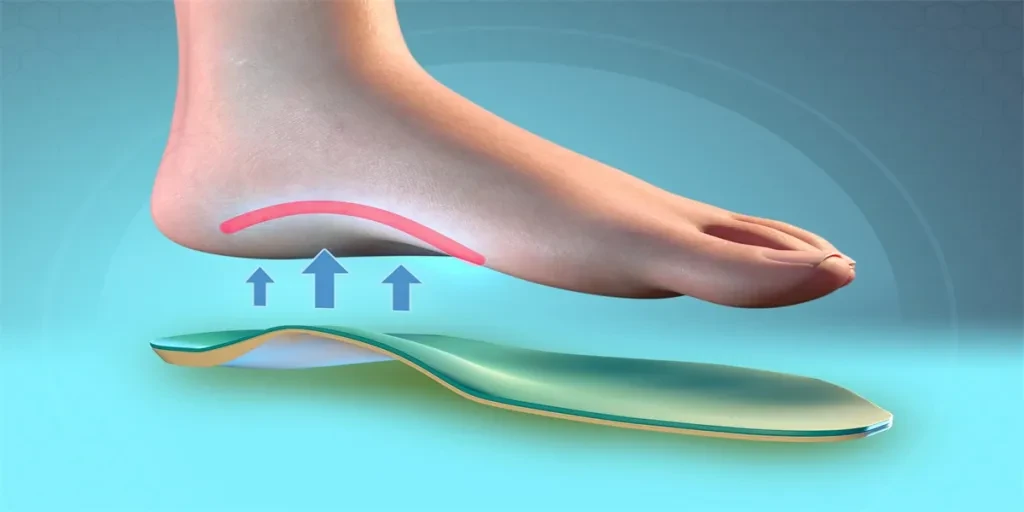
快適性を高める先進素材
靴のクッション材に使用される素材は、履き心地とパフォーマンスを決定する上で重要な役割を果たします。ミッドソールに最も一般的に使用される素材の 1 つは、EVA (エチレン ビニル アセテート) フォームです。EVA フォームは軽量で衝撃を吸収する能力に定評があり、ランニング シューズやハイキング シューズによく使用されています。専門家の報告によると、EVA ミッドソールはかかとや中足部の衝撃を和らげるため、長時間のハイキングで一日中快適に過ごすために不可欠です。ただし、EVA の柔らかさはさまざまで、独自のバージョンの中には非常に柔らかいものもあれば、やや硬いものもあります。この多様性により、メーカーはさまざまなアクティビティやユーザーの好みに合わせてクッションを調整できます。
靴のクッション材によく使われるもう 1 つの素材は、TPU (熱可塑性ポリウレタン) です。TPU は耐久性のあるプラスチックで、パフォーマンス重視の軽量ハイキングシューズによく使われています。TPU を足裏に使用した靴は、EVA のみを使用した靴よりもクッション性に欠ける傾向がありますが、耐久性が高く、重い荷物の取り扱いが優れています。そのため、TPU は、厳しい地形や過酷なアクティビティ向けに設計された靴に最適です。ミッドソールに EVA と TPU を組み合わせることで、快適さと耐久性のバランスが取れ、クッション性を損なうことなく靴を長時間使用しても耐えることができます。
最適なサポートのための革新的な設計技術
最適なサポートを提供するには、使用する素材に加えて、靴のクッションシステムのデザインも重要です。現代の靴のデザインには、靴の性能と快適性を高めるための高度な技術が取り入れられていることがよくあります。たとえば、一部のハイキング シューズでは、靴の上部に革とナイロン メッシュを組み合わせています。このデザインは耐久性を高めるだけでなく、通気性も向上させます。これは、長時間のハイキング中に快適さを維持するために不可欠です。
もう一つの革新的なデザイン手法は、アプローチ シューズに硬いミッドソールとソールを使用することです。これらのシューズは、圧力がかかったときに靴が過度に圧縮されるのを防ぐ、しっかりとしたプラットフォームを提供するように設計されています。この硬さは、岩をよじ登るなど、足を正確に置かなければならないアクティビティに特に役立ちます。ただし、硬すぎるシューズはトレイルで不格好で扱いにくいと感じる可能性があるため、適切なバランスを見つけることが重要です。
つま先の保護は、靴のデザインにおけるもう 1 つの重要な要素です。多くのハイキング シューズやアプローチ シューズには、つま先部分を覆うランドが付いており、つま先をぶつけたときの保護や岩の多い地面でのグリップ力を高めます。靴の中には、足全体にこのレベルの保護とグリップ力を与える、全面を包み込むランドが付いているものもあります。このデザインは、靴の耐久性を高めるだけでなく、厳しい地形での性能も向上させます。
技術的特徴: 靴のクッションの未来
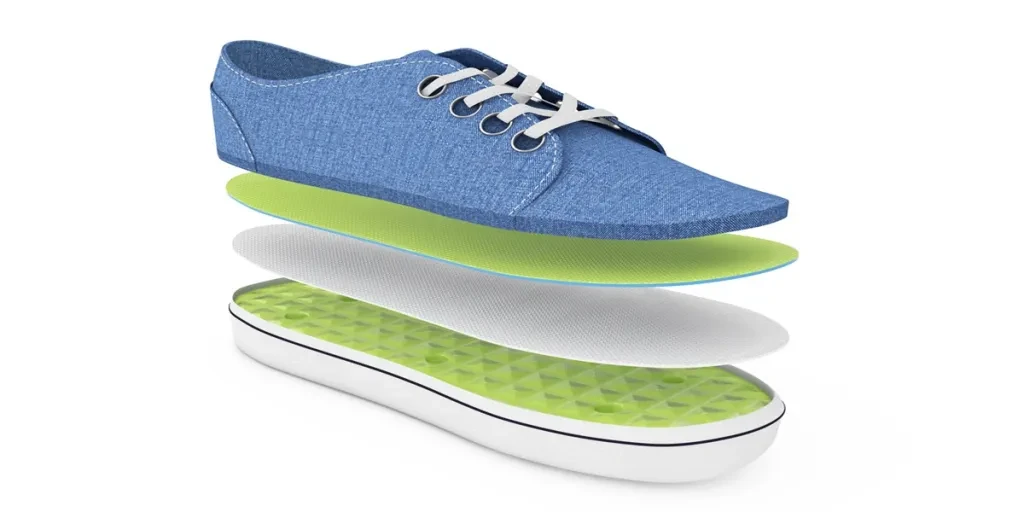
スマートクッションシステム
靴のクッションの将来は、ユーザーのニーズにリアルタイムで適応できるスマート テクノロジーの統合にあります。スマート クッション システムは、ユーザーの活動と足の圧力に基づいてクッションのレベルを調整することで、動的なサポートと快適さを提供するように設計されています。これらのシステムには、ユーザーの動きを監視してクッションをリアルタイムで調整するセンサーとマイクロプロセッサが組み込まれていることがよくあります。このテクノロジーは、自然な足の動きを最適化し、衝撃吸収性を高め、怪我のリスクを軽減するのに役立ちます。
ウェアラブル技術の統合
ウェアラブル テクノロジーを靴のクッション システムに統合することは、靴業界におけるもう 1 つのエキサイティングな開発です。ウェアラブル テクノロジーは、ユーザーの歩き方、足の圧力、全体的なパフォーマンスに関する貴重な情報を提供します。たとえば、一部の高度なインソールには、ユーザーの足の動きを追跡し、ランニングやウォーキングのテクニックに関するフィードバックを提供できるセンサーが搭載されています。
さらに、ウェアラブル テクノロジーは、靴の快適性とフィット感を高めることもできます。たとえば、靴のボリュームを補ってフィット感を高め、かかとの滑りなどの問題を軽減するように設計されたインソールもあります。このカスタマイズにより、ユーザーの快適性と全体的な体験が大幅に向上し、長時間の活動が容易になります。
メリットとパフォーマンス: 靴のクッション性が重要な理由
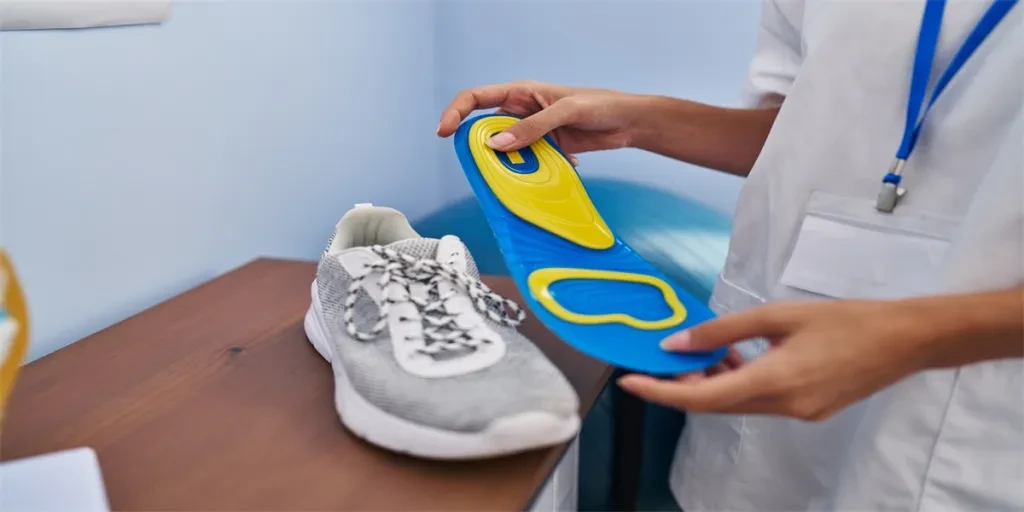
改善された運動能力
適切な靴のクッション性は、運動能力の向上に不可欠です。クッション性のある靴は、自然な足の動きを最適化し、衝撃吸収性を高め、関節や筋肉への衝撃を軽減するのに役立ちます。これにより、持久力が向上し、回復時間が短縮され、全体的なパフォーマンスが向上します。専門家の報告によると、パフォーマンスインソールは自然な足の動きを最適化し、長時間の活動を容易にするように設計されています。
傷害予防と安全
適切な靴のクッションのもう 1 つの重要な利点は、怪我の予防です。クッション付きの靴は、足底筋膜炎、外反母趾、踵骨棘などの一般的な足の問題のリスクを軽減するのに役立ちます。また、アーチのサポートが強化され、膝や背中への負担が軽減されます。これは、長時間立ちっぱなしの人や衝撃の大きい活動に従事する人にとって特に重要です。たとえば、コンフォート インソールは、アーチのサポートを強化し、不快感や痛みを和らげるように設計されています。
カスタマイズとターゲット層: 多様なニーズへの対応
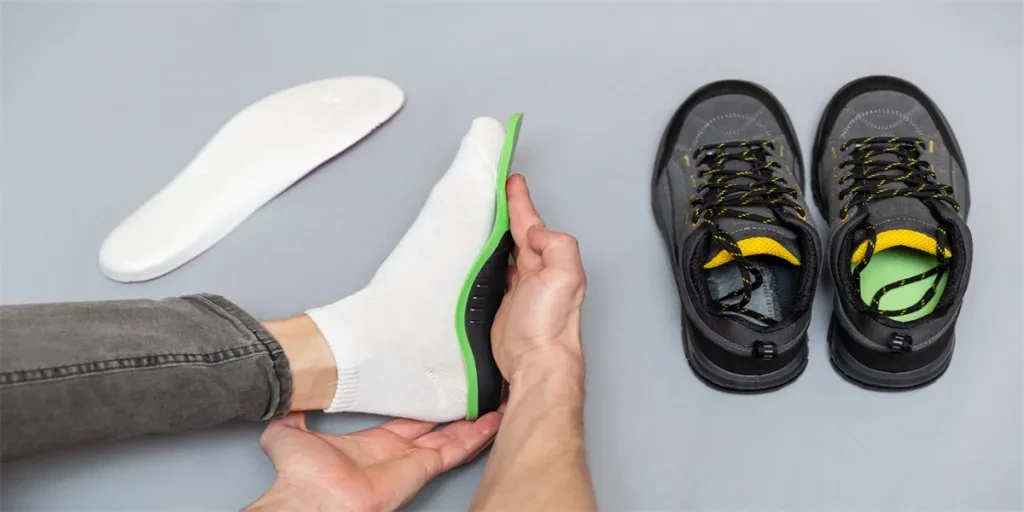
さまざまなアクティビティに合わせたソリューション
活動内容によって、必要な靴のクッションの種類は異なります。たとえば、ハイキング シューズは、厳しい地形での長時間のハイキングに耐えられるよう、快適性と耐久性のバランスが取れている必要があります。一方、ランニング シューズは、関節や筋肉への衝撃を軽減するために、優れた衝撃吸収性とサポート性を備えている必要があります。カスタム オルソティックは、さまざまな活動の特定のニーズに合わせて調整でき、パーソナライズされたサポートと快適性を提供します。
特定の人口統計への対応
靴のクッションシステムは、特定の人口統計に合わせてカスタマイズすることもできます。たとえば、女性用のハイキング シューズは、女性の足の独特な形状に合わせてフィット感、快適さ、サポートを重視したデザインになっていることがよくあります。同様に、過剰な回内や回外などの特定の足の問題を抱える人向けの靴は、必要なサポートと矯正を提供するために、特殊なインソールを使用して設計できます。
まとめ:
素材、デザイン、テクノロジーの進歩により、靴のクッション システムの性能と快適性が大幅に向上しました。靴業界が革新を続ける中、スマート テクノロジーとウェアラブル デバイスが先導する靴のクッションの将来は有望に見えます。これらの開発は、運動能力を高めて怪我を防ぐだけでなく、さまざまなユーザーの多様なニーズを満たすカスタマイズされたソリューションも提供します。業界が進化するにつれて、最適な快適性とサポートのために最善の選択を行うには、最新のトレンドとテクノロジーに関する情報を常に把握しておくことが不可欠です。





 Afrikaans
Afrikaans አማርኛ
አማርኛ العربية
العربية বাংলা
বাংলা Nederlands
Nederlands English
English Français
Français Deutsch
Deutsch हिन्दी
हिन्दी Bahasa Indonesia
Bahasa Indonesia Italiano
Italiano 日本語
日本語 한국어
한국어 Bahasa Melayu
Bahasa Melayu മലയാളം
മലയാളം پښتو
پښتو فارسی
فارسی Polski
Polski Português
Português Русский
Русский Español
Español Kiswahili
Kiswahili ไทย
ไทย Türkçe
Türkçe اردو
اردو Tiếng Việt
Tiếng Việt isiXhosa
isiXhosa Zulu
Zulu